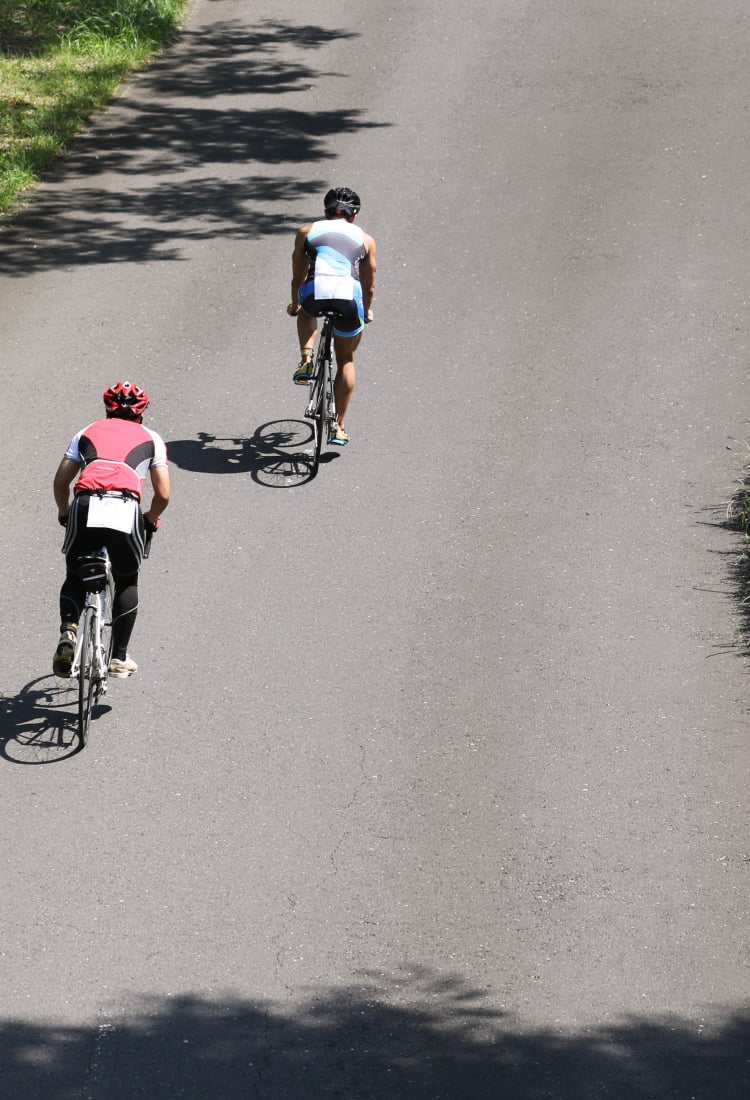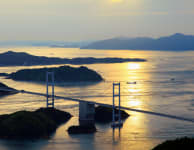Japan's mountainous terrain and diverse landscapes make it a challenging and rewarding destination for cyclists
Japan's extraordinarily comprehensive rail network might take the limelight when it comes to traveling within the country, but, by swapping your Japan Rail Pass for a bike, you'll get to explore a side of Japan many overseas visitors never see when sticking to well-trodden tourist routes.

Climate considerations
Planning your trip may feel a little overwhelming. Japan has four very distinct seasons, as well as a great deal of regional variety in terrain and conditions, so plan accordingly.
The winters in the northernmost island of Hokkaido are harsh and lengthy, whereas the southern regions of Kyushu and Shikoku have much warmer weather and, in summer, you'll quickly find yourself drenched in sweat. Be aware of the climate and terrain you'll be tackling on your trip.
The main island of Honshu has the most regional variation in weather and rides from Aomori to Yamaguchi offer spectacular diversity. As a result of the dramatic seasonal weather, it's best to tackle Hokkaido and the northern prefectures of Honshu during the hottest months, and set out for the south during spring or autumn. If you are feeling particularly adventurous, head to tropical Okinawa . Regardless of your route, the roads are generally quieter early in the morning, so try and wake up early to make the most of your day.
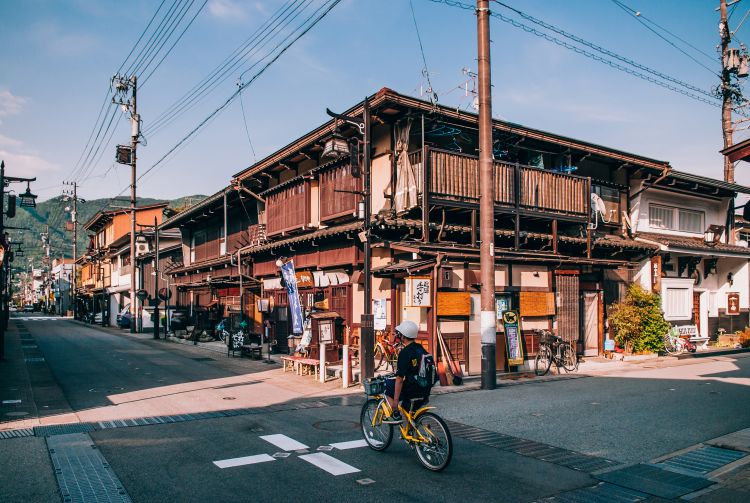
Japan's cycling culture
Transportation infrastructure in Japan are generally very good, and roads are well-maintained throughout the country. However, it is important to remember that many of the lesser traveled back roads are narrow, steep and winding. These roads may be more of a challenge to traverse, but the scenery will more than make up for the extra energy you expend.
In Japan, drivers take the left side of the road, so, be mindful of that if you usually drive on the right. Biking in large cities can be quite stressful due to the high volume of traffic, so it's best to remain out on the open road for as much of your travels as possible.
If you don't want to build a route from scratch, there are several established routes you can follow. One popular trail is the Setouchi Shimanami Kaido , a 60-kilometer stretch that connects Onomichi in Honshu with Imabari in Shikoku, providing memorable views of the Seto Inland Sea along the way. This relatively easy undertaking is a great starting point for beginners looking to get their first taste of cycling in Japan. The route crosses six islands and nine bridges, with many hotels and hostels offering reasonably priced accommodation to weary travelers.
For a more competitive ride, sign up for the Japanese Odyssey endurance cycling event. It sees riders cross several Honshu checkpoints over 10 days before heading to other areas in Japan.
This challenge, established in 2015, changes its route annually, keeping it fresh for the legions of international cyclists who return to take part every year. Similar coordinated events are held all over Japan by various local groups, so it's worth checking with local and international cycling groups if you want to get involved.
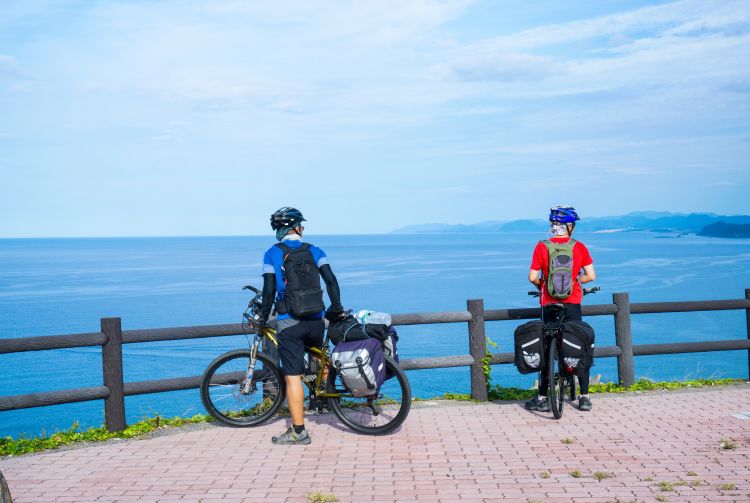
Gathering essential equipment
Selecting the appropriate equipment is key to an efficient, comfortable trip. Ensure you've got some waterproof pants and a spare shirt to change into when you're not cycling. Your bike is unlikely to be stolen in Japan, but you should still purchase a good lock as a sensible precaution. The summer sun is intense, so always carry water to prevent dehydration, as well as a pair of sunglasses. A fully stocked first aid kit, a sturdy pair of shoes and a charger for any portable electronic devices are also essentials. From April 2023, cyclists in japan are required to make effort to wear a helmet.
Due to the mountainous nature of the topography, it is advisable to take a bike with a small climbing gear ratio to lessen the physical burden. For your safety, it's critical your bike is fitted out with reliable lights and reflectors. They will be put to good use when traveling through the many mountain tunnels you'll be passing through, especially in Hokkaido. A bell is also mandatory under Japanese law.
You can access free Wi-Fi at every convenience store, so you're never too far from the outside world. You can also rent pocket wifi devices upon arrival at the airport if you consider it to be a necessity.
Traveling with a paper map will keep you on track if you don't have internet access, and will be a useful tool to point to if you need to ask locals for directions. Fellow cyclists are a particularly good source for directions—and perhaps even some insider information.
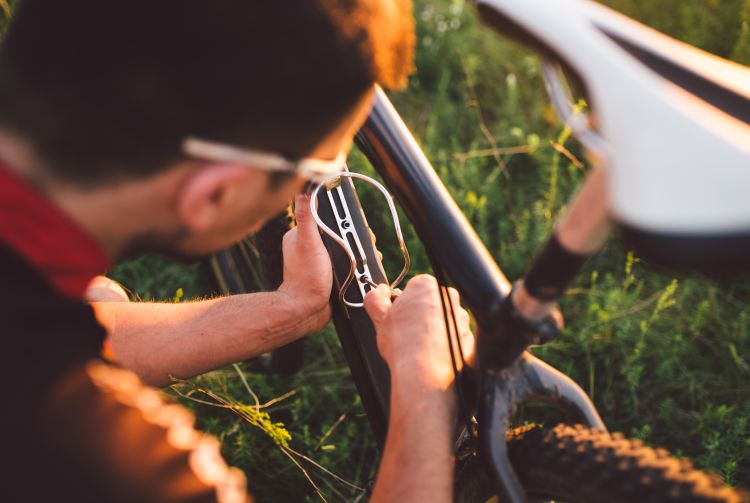
Repairs and relaxation
One of the great pleasures of traveling by bike is being able to stop at any point to dine at local eateries, sample regional delicacies and interact with proprietors and customers who seldom encounter non-Japanese clientele. An important factor to take into consideration is the low level of English proficiency in rural Japan, so brush up on some basic Japanese phrases to make your life a little easier. When you only have time for a short stop, convenience stores stock cheap and tasty on-the-go snacks. You can find them in virtually every town.
You will have the option of spending nights in traditional Japanese inns (ryokan), hotels, Airbnbs, or even setting up camp under the stars—but make sure to pick up your trash before you leave. Particularly common in Hokkaido is an especially low-budget form of lodgings called Rider Houses, which are simplistic dwellings intended only for bike travelers. However, some rider houses are not open during the island's long winter.
In the event your bike encounters a problem or requires repairs, you may be able to take advantage of local services to help you out. In more remote areas this isn't possible, so make sure you check your bike regularly for signs of wear and tear. If funds allow, you could travel in the company of a support car with a specialized mechanic to look out for you.
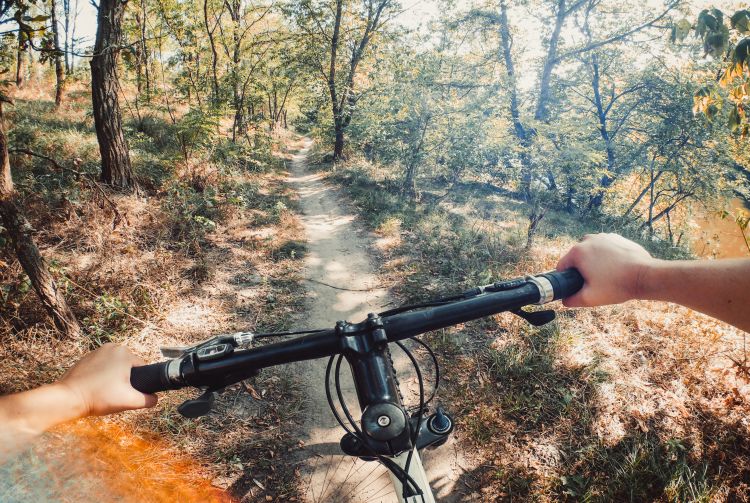
Some final advice
If you need to take your bike on buses or trains, place it in a Rinko bag. They are available in all Japanese bike shops for around 5,000 yen. Avoid using trains during rush hour when the sheer lack of space for luggage will prove problematic. If you're traveling by ferry, you will be permitted to take your bike directly on board without a bag. Bicycle rental (rentasaikuru) is possible in those locations that enjoy high levels of visitors, and you should have no problem getting yourself set up. Present a valid form of identification, such as your passport or driver's license. These rental companies, both public and private, are likely to have some level of English ability if they're in a major city such as Tokyo or Osaka.
If you are still a little nervous about your biking adventure, numerous companies offer guided tours across the main islands of Japan. No matter how you go about your Japanese journey, it will be one you will never forget.
The latest information may differ, so please check the official website.
* The information on this page may be subject to change due to COVID-19.




























































